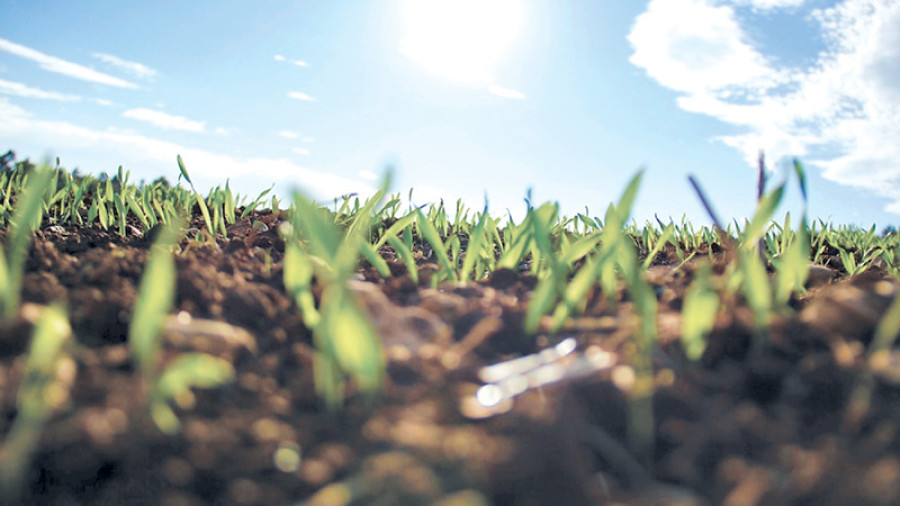Opinion
As you sow
An infrastructural development programme is required to ensure quality seed supplies
Nanu Jha
Agricultural scientists, policymakers and governments have assigned top priority to seeds and the development of the seed industry because they are an essential living ingredient in the farm sector. Human use of seed marks the transition from nomadic food gathering to sedentary civilisations based on agriculture. The characteristics of wild plants that were not optimal for agricultural crop production were discarded and other characteristics were selected. In this process, various plants have changed considerably and new types have developed. Plant breeding can produce superior varieties through recombination and subsequent selection of as many positive characteristics as possible in one genotype or one population.
Multiplying that genotype under strict supervision will result in a crop production field with a maximum number of plants with those positive traits. Modern plant breeding and seed supply are just another phase in the same continuum of evolution and domestication.
Hybrids are now being grown extensively in China, even in self-pollinated plants like rice. Chinese scientists led by Yuan Long Ping developed a methodology for the production of large scale F1 hybrids in rice. F1 hybrids can give 20 to 30 percent more yield than the parents. In the US, hybrids revolutionised maize production in the 1930s. India became the first country to start a hybrid cotton industry.
Seeds in Nepal
In Nepal, the then Agriculture Inputs Corporation (AIC) was entrusted with the production and supply of seeds in addition to other activities. The corporation was procuring seeds from contracted seed growers, farms and research stations. They provided quality seeds to farmers through a network distribution system. Since the early 1990s, the government has been making efforts to privatise the seed industry. AIC was occupied with its fertiliser business and could not implement the national seed strategy. In 1999, the government decided to split AIC with the intention of converting it into a private company, initially with government shareholding. In 2002, the government established National Seed Company Limited.
Before 2000, the private seed sector was mostly engaged in producing vegetable seeds. The establishment of Lumbini Seed Company in 2003 marked the beginning of the private sector’s involvement in cereal seeds. Later, many private seed companies entered the scene along with cooperatives. There are now more than 30 seed companies and cooperatives which produce 15,000 tonnes of cereal seeds annually. The government of Nepal initiated a seed subsidy programme in 2013-14. The share of the private sector in the national seeds supply has been growing while that of the state-owned National Seed Company has been shrinking. This is not a good sign for farmers because it will be very difficult for the government to find out the real procurement price and cost of producing seeds to plan its subsidy programme.
However, the subsidy programme was very good for some private companies and seed traders because it ensured a market for their cereal seeds. Presently, more than 1,850 seed entrepreneurs and 830 traders are directly or indirectly involved in the seed business, and most of them have very low annual transactions. The private sector lacks adequate infrastructure like seed processing facilities, warehouses and laboratories besides skilled manpower required for seed production and supply.
For business
One very important aspect of any seed policy is how the seed chain should be organised. Basically, there are two views regarding the seed industry—developmental and commercial. The developmental view sees the seed supply chain as a means to channel the benefits of modern agricultural research to farmers.
Seed plays a crucial role in agricultural development and, therefore, should be provided at subsidised prices to increase the adoption rate of new technology and boost food output. According to the second school of thought, seed production can be a productive operation and should be run as a business. Farmers will recoup the investment made in seeds and subsidies will only distort the system. Farmers are best off with a healthy and commercially-sound seed industry and governments should facilitate the establishment and operation of a seed industry by reducing economic and bureaucratic barriers. These two extreme views have resulted in the emergence of very different seed supply organisations.
Joint ventures can work very well. At the outset, they need to have clear short- or medium-term profit prospects. However, this is often not the case in public institutions. Private investors are reluctant to put their money into government controlled companies. Therefore, National Seed Company needs a long-term, technically sound and economically viable business plan to operate in a commercial way; and the government should slowly release its shares into the private sector with a view to give up control.
Ensuring quality
Nepal has been facing natural disasters almost annually in the form of flood, drought, hailstone, cold wave and earthquake. As a result, a crop failure in one year reduces the required amount of quality seeds for the following year. Seed supplies must be ensured to regularise food supplies in the affected localities during such emergency situations. One or two popular varieties of seeds of some major cereals cultivated across the country should be kept as buffer stock. This requires a special type of cost effective seed production and storage programme to be run under government supervision.
Private seed companies, traders and cooperatives produce a large quantity of seeds annually, and they also import hybrid seeds and non-registered varieties. Recent trends in seed production and marketing show that the private sector leads in seed production, marketing and the government’s seed subsidy programme. Only the existence of a competitive market can prevent the distribution of substandard seeds in the country. In view of the present condition of the private seed sector, an infrastructural development support programme is required to ensure quality seed supplies. It is also necessary to launch a buffer seed stock management programme on behalf of the government. The government should focus on judicious implementation of the prevailing seed subsidy programme so that it will benefit resource poor farmers.
Jha is an agricultural economist




 10.12°C Kathmandu
10.12°C Kathmandu










